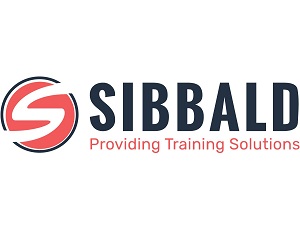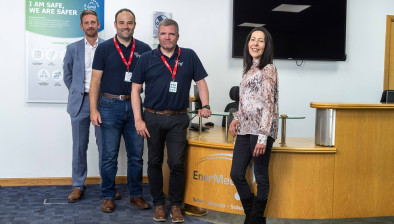Engineering construction industry hiring challenges highlighted in ECITB census

ECITB chief executive Andrew Hockey (centre) on a visit to ECI employer Trillium Flow Technologies in Scotland
The challenges facing Scotland to ensure it has the skilled workers needed to meet future demand in the engineering construction industry (ECI) have been highlighted in a new workforce report published today.
The ECI plays a crucial role in the UK meeting its net zero ambitions, spanning sectors that focus on the construction, maintenance and decommissioning of heavy industry, including oil and gas, nuclear, power generation, renewables, chemicals, food and drink, pharmaceuticals and water treatment.
The Engineering Construction Industry Training Board’s (ECITB) Regional Workforce Census report offers a comprehensive overview of the ECI workforce in Scotland, having gathered data on more than 16,000 workers.
The data reveals that 81% of ECI employers in Scotland are experiencing challenges hiring workers, compared to 71% in the wider industry across Great Britain.
The main reasons cited by employers for these challenges include the competitive labour market, the niche nature of some roles, limited resources to offer competitive wages, a lack of experience among candidates and a shortage of skills and qualifications.
Additionally, some employers noted the reduced attractiveness of oil and gas compared to other industries, with the sector remaining the main employer within the ECI in Scotland at 59% of the workforce.
Positions such as process engineers, mechanical designers, instrument technicians, pipefitters, welders, fabricators, planners and risk managers are among the most difficult to recruit.
The ECITB report also highlights an upcoming wave of possible retirements, with the share of workers over 60 in Scotland increasing from 8% to 16.2% since 2021.
ECITB chief executive Andrew Hockey said: “The Census is vital in helping industry understand labour market dynamics, anticipate workforce challenges and develop strategies to address skill gaps in Scotland.
“Only through bringing in new talent, training and upskilling existing workers can industry benefit from the skilled workforce it needs both for now and the future.
“The ECITB will continue to support employers in Scotland to invest in their talent pipeline – helping industry to grow the number of apprenticeships and graduate opportunities, developing alternative entry pathways and funding quality training to upskill and reskill the workforce.”
Other key findings on Scotland from the Census
• Scotland employs 17% of the ECI workforce in Great Britain, with major workforce hotspots in Aberdeen, Thurso, Glasgow and Grangemouth.
• Although the oil and gas sector remains the main employer in Scotland, the nuclear sector is the primary employer in the Highlands and Islands, making up 81.4% of its workforce.
• Workforce growth expectations are most optimistic in the East of Scotland, where employers expect a 23% increase in headcount over the next three years. However, 21.3% of the ECI workforce in this region is aged over 60.
• Women make up 22% of the ECI workforce in Scotland, compared to 17% in the wider ECI. The share is highest in the Highlands and Islands, where 28.5% of the workforce are women, and lowest in the East of Scotland at just 5.4%.
• North East Scotland makes up 7.7% of the overall ECI workforce in Great Britain, at over 7,200 workers, and mainly works in the oil and gas sector (89%).
• In West and South West Scotland, only 5.7% of the workforce is under 25.
Helping predict future trends
The ECITB conducts a census every three years, with in-scope employers providing information on workforce numbers by occupation, sector and location, as well as demographics data on age, gender, ethnicity and nationality.
Employers primarily involved in engineering construction are considered ‘in-scope’ of the ECITB’s remit, with those exceeding a certain size legally required to contribute to an industrial training levy.
In summer 2024, employers were asked to fill out an online survey which included questions on expected workforce growth, business opportunities by sector and hiring challenges.
Andrew added: “Thanks to a record response rate, up from 54% of the workforce covered in 2021 to 78.8%, the ECITB will now be able to provide more precise, up-to-date data to industry and make predictions on future workforce trends and labour demands in Scotland.
“The Census data will help inform training interventions and ensure accurate representation of industry in our discussions with governments and other partners.”




















